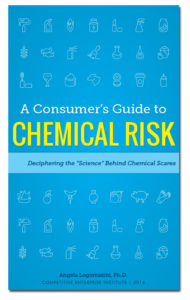Evidence continues to grow in support of the threshold theory. Many chemicals are safe under a given threshold or exposure level, with each chemical having its own threshold. The low-dose linearity model ignores the human body’s ability to create defense mechanisms against chemicals at low doses. That means low-level exposures might help us fight off cancer and other illnesses. Scientist Jay Lehr notes that studies have found cases in which people exposed to low-levels of radiation actually experienced less incidence of leukemia than the general population, whereas highly exposed individuals experienced elevated rates of leukemia.(1) This idea that chemicals may be beneficial at low levels but dangerous at high levels is called hormesis.(2) It makes sense. Consider the fact that many vitamins and minerals are essential at trace-exposure levels, but they can be dangerous or even deadly when consumed at high levels.
(1) Jay Lehr, Ph.D., “Good News About Radon: The Linear Nonthreshold Model Is Wrong,” JunkScience.com, May 1996.
(2) Mark P. Mattson, “Hormesis Defined,” Aging Research Reviews 7, no. 1 (January 2008): 1-7.


